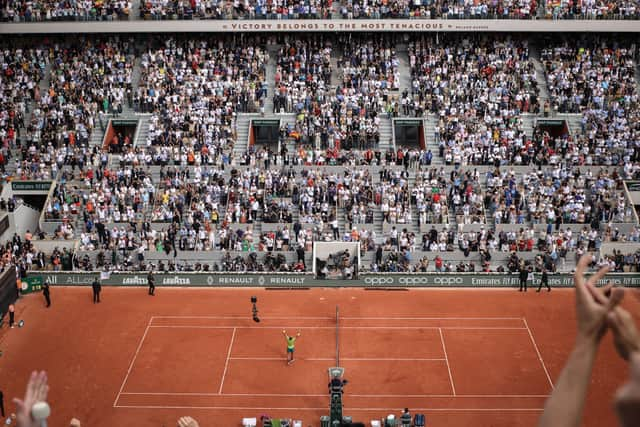French Open 2023: what are Roland-Garros courts made from - is it clay? Style of play and differences explained
and live on Freeview channel 276
The first round of the French Open is already underway with Britain’s Dan Evans taking to the clay later this morning (Sunday 28 May, 11.15am). His compatriots Cameron Norrie and Jack Draper will both be in action tomorrow in the hope of Grand Slam glory.
The French Open is synonymous with Rafael Nadal, who has won 14 titles in Paris, but the reigning champion has been unable to participate in the tournament as he continues recovery from an on-going injury. The Spanish 22-time Grand Slam winner has made suggestions 2024 could be his last season on tour and fans will hope to see the King of Clay in action in the French capital once more.
Advertisement
Hide AdAdvertisement
Hide AdOf the four Grand Slams which take place every year, the French Open is the only one to use clay courts, making it one of the hardest competitions on the circuit. Here is all you need to know about why clay is so different...
When is the French Open?
The French Open qualifiers have finished and the tournament proper will begin on Sunday 28 May. The Ladies’ singles final will then take place on Saturday 10 June while the Men’s final will take place on Sunday 11 June.
Eurosport’s Discovery+ will have all of the action from Roland Garros with fans able to sign up to the streaming service from £6.99/month.


What are the courts made from?
The French Open is famously the only Grand Slam to be held on clay courts but the courts are in fact not made from clay, but the dust from red brick on top of a layer of crushed white limestone.
Advertisement
Hide AdAdvertisement
Hide AdWimbledon, beginning at the end of June this year, is held on grass courts while the US Open and Australian Open are both held on different types of hard court.
What makes the clay different?
The softness and speed-absorbing grab of clay courts slows down the shots more than other surfaces do. This dulls the speedy serves and groundstrokes and the grittiness of the clay also magnifies the effect of heavy spin, creating higher arcs as the balls come off the ground.
Tamara Zidansek, who reached the French Open semi-finals in 2021, said: “Clay is a completely different surface from hard courts and grass. It’s such a specific surface.”
Tennis legend Martina Navratilova also said of clay courts: “on clay you have to hit a lot of balls to win matches. If you’re not quite 100 percent confident, it really shows ups. It’s harder to win matches when you’re not playing well.”
Advertisement
Hide AdAdvertisement
Hide AdThere is an increased reward for strategy, switching up the speeds and spins and using drop shots when playing on clay. The use of strong serves and quick-fire forehands, which are usually relied upon heavily by players, are not as effective on clay.
Points on clay also tend to be much longer due as there are fewer opportunities for serving aces and quick points. Women’s matches in Paris in 2021 averaged one hour, 39 minutes, while matches at the US Open averaged three minutes longer and Wimbledon saw matches average on hour, 45 minutes.
In the Men’s tournament, matches averaged two hours, 39 minutes, 24 seconds in 2021 which was 11 minutes longer than the Australian Open earlier in the year.
Comment Guidelines
National World encourages reader discussion on our stories. User feedback, insights and back-and-forth exchanges add a rich layer of context to reporting. Please review our Community Guidelines before commenting.
